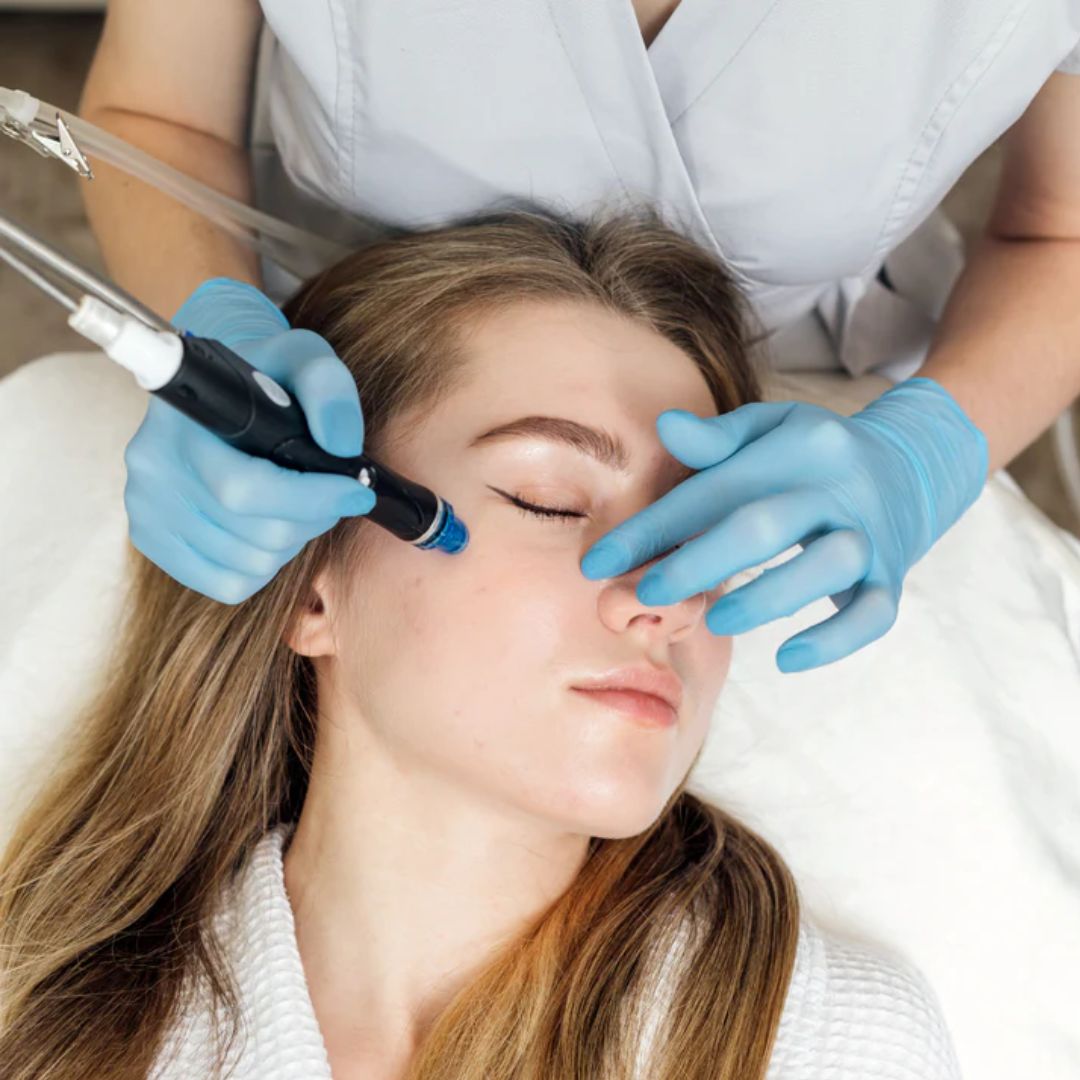When it comes to skincare treatments, the options can be overwhelming. Among the many choices, HydraFacial has emerged as a popular option, renowned for its multi-step process that cleanses, exfoliates, and hydrates the skin. However, how does it compare to other treatments like chemical peels, microdermabrasion, and traditional facials? Understanding the differences can help you choose the best treatment for your skin type and goals.
What Is a HydraFacial?
HydraFacial is a non-invasive treatment that combines cleansing, exfoliation, extraction, and hydration in one session. Using a patented vortex technology, it infuses the skin with nourishing serums tailored to your specific needs, making it suitable for various skin types. The treatment typically takes about 30 to 60 minutes and involves minimal downtime, allowing for immediate results.

Comparing Treatments
Chemical Peels
Overview: Chemical peels use acids to exfoliate the skin, targeting issues like hyperpigmentation, acne, and fine lines. They can be superficial, medium, or deep, depending on the desired intensity.
Pros: Chemical peels can lead to significant improvements in skin texture and tone. Deeper peels may offer longer-lasting results for severe skin concerns.
Cons: Recovery time can vary, with deeper peels requiring days to weeks for the skin to heal. There may also be discomfort during the treatment.
Best For: Individuals looking to address specific skin concerns like deep wrinkles, severe acne scars, or sun damage.
Microdermabrasion
Overview: Microdermabrasion is a physical exfoliation treatment that uses tiny crystals to remove the outermost layer of dead skin cells. It promotes cell turnover and reveals smoother skin underneath.
Pros:This treatment is generally painless, requires no downtime, and can improve the appearance of dull skin and minor imperfections.
Cons:Results are often subtle, and multiple sessions may be needed for optimal outcomes. It may not be effective for deeper skin issues.
Best For:Those looking to refresh their skin’s appearance, particularly individuals with minor textural concerns or signs of aging.
Traditional Facials
Overview: Traditional facials typically include cleansing, steaming, extraction, and mask application. They can vary widely in techniques and products used.
Pros: Facials can be highly relaxing and customizable based on individual preferences. They often incorporate soothing elements that enhance the experience.
Cons: While facials provide a temporary boost, they may not offer long-term benefits for specific skin concerns compared to more intensive treatments.
Best For: Individuals seeking relaxation and hydration, or those looking to maintain healthy skin without targeting specific issues.

Why Choose HydraFacial?
HydraFacial stands out due to its unique combination of cleansing, exfoliation, extraction, and hydration in a single treatment. It is particularly beneficial for those with:
Dull or Dehydrated Skin: The hydrating serums can restore moisture, leaving the skin plump and radiant.
Acne-Prone Skin: The treatment’s gentle extraction process helps clear pores without harsh extractions.
Sensitive Skin: The customizable nature of the treatment allows for soothing options that cater to sensitive skin types.
Choosing the best treatment for your skin ultimately depends on your specific concerns and desired outcomes. HydraFacial is an excellent option for those seeking immediate results with minimal downtime, while chemical peels and microdermabrasion may be better suited for more intensive skin issues. Traditional facials offer a relaxing experience but may not provide the same level of targeted treatment. Consulting with a skincare professional can help you determine the best approach for achieving your skin goals, ensuring you choose the right treatment for your needs.